#>Tanzania
Explore tagged Tumblr posts
Text
Three Incredible African Safari Destinations

Africa is a famous vacation spot, with millions of tourists visiting the continent yearly to go on safari, a word in Swahili meaning trip. Visitors who go on safari have the opportunity to see a wide variety of wild animals in their natural habitat. Among the many safari destinations, Kenya, Tanzania, and South Africa are considered to be the best places to experience the beauty and splendor of the African wilderness.
For good reason, Kenya has long been regarded as the birthplace of the safari. It is home to the world-renowned Maasai Mara National Reserve, which gives tourists the chance to see the "Big Five" (elephant, buffalo, rhinoceros, lion, and leopard) and other wildlife including giraffes, hippos, and hyenas in one location. The Mara's diverse topography, from expansive savannahs to green riverine forests, provides the perfect backdrop for wildlife observation and photography.
The best time to go on safari in Kenya is during the dry season, which runs from July to October. This is when the spectacular Great Migration takes place, with over 1.5 million zebras, gazelles, and wildebeest moving from Tanzania's Serengeti National Park to Kenya's Maasai Mara in search of greener pasture. To reach the Maasai Mara during the Great Migration—which is recognized as one of the world's new wonders—the animals have to swim across the Mara River, which is packed with crocodiles, and sadly, many of them do not make it through the crossing. Predators such as lions, cheetahs, and leopards that lurk in the Maasai Mara still pose a threat to those animals that survive the Mara River crossing. Every year, thousands of visitors travel to Kenya and its neighbor Tanzania to witness the Great Migration.
Between July and October, travelers to Tanzania can also be a part of the Great Migration at the popular Serengeti National Park, which rivals Kenya's Maasai Mara in terms of natural beauty and wildlife. Tanzania is also home to the Ngorongoro Crater, a UNESCO World Heritage that hosts thousands of wild animals, including a large population of lions, elephants, wildebeest, and rhinos, making it one of the most densely populated wildlife areas in the world.
Another must-see destination in Tanzania is Mount Kilimanjaro, Africa's tallest peak. While not a traditional safari location, the iconic mountain adds to Tanzania's allure, offering opportunities for trekking and stunning panoramic views of the surrounding landscapes. Travelers interested in a more cultural experience can also interact with the Maasai people, a nomadic tribe living in Tanzania and Kenya who have rich traditions and a strong bond with the land and wildlife.
In South Africa, a well-liked safari attraction is Kruger National Park. This park is one of Africa's largest wildlife sanctuaries, spanning around 20,000 square kilometers. More than 500 bird species and 147 mammal species call it home, and many of the Big Five animals can also be spotted by visitors at Kruger National Park. The ideal time to go on safari at Kruger is also during South Africa's dry season, from April to October. At this time, animals congregate around waterholes and are easier to find because of the scant vegetation.
South Africa provides opportunities to visit wineries, seaside towns, and historical places like Nelson Mandela's jail cell at Robben Island, Cape Town, for people who want to mix a safari with other pursuits.
5 notes
·
View notes
Text
Benin vs Nigeria Clash Headlines 2025 AFCON Qualifiers: Full Fixture List Revealed The race for the 2025 Africa Cup of Nations (AFCON) is heating up as nations across Africa gear up for the final qualifying matches. The fixtures, spanning from Wednesday, November 13, to Tuesday, November 19, will see intense battles as teams vie for a coveted spot in the tournament. The highly anticipated clash between Benin and Nigeria is set for Thursday, November 14, in Group D. With both teams fighting for a place in the continental showpiece, the match promises to be a thrilling encounter. AFCON 2025 Qualifiers: Full Schedule Below is the complete list of fixtures for Matchday 5 and Matchday 6 of the 2025 AFCON qualifiers. All times are listed in GMT. Matchday 5 Fixtures November 13, Wednesday Group E: Liberia vs Togo (1600) Group G: Chad vs Sierra Leone (1900) Group J: Namibia vs Cameroon (1300) November 14, Thursday Group A: Madagascar vs Tunisia (1600) Group B: Lesotho vs Central African Republic (1300) Group D: Rwanda vs Libya (1600), Benin vs Nigeria (1900) Group E: Equatorial Guinea vs Algeria (1300) Group F: Niger vs Sudan (1600) Group K: South Sudan vs Congo Brazzaville (1300) Group L: Burundi vs Malawi (1500), Burkina Faso vs Senegal (1900) November 15, Friday Group A: Gambia vs Comoros (1900) Group B: Gabon vs Morocco (1900) Group C: Botswana vs Mauritania (1300), Cape Verde vs Egypt (1600) Group F: Angola vs Ghana (1900) Group G: Zambia vs Ivory Coast (1600) Group I: Mozambique vs Mali, Eswatini vs Guinea-Bissau (both 1600) Group J: Zimbabwe vs Kenya (1600) Group K: Uganda vs South Africa (1300) November 16, Saturday Group H: Ethiopia vs Tanzania (1600), Guinea vs DR Congo (1900) Matchday 6 Fixtures November 17, Sunday Group E: Algeria vs Liberia, Togo vs Equatorial Guinea (both 1600) November 18, Monday Group A: Comoros vs Madagascar, Tunisia vs Gambia (both 1900) Group B: Central African Republic vs Gabon, Morocco vs Lesotho (both 1900) Group D: Nigeria vs Rwanda, Libya vs Benin (both 1600) Group F: Sudan vs Angola, Ghana vs Niger (both 1600) Group L: Malawi vs Burkina Faso (1300) November 19, Tuesday Group C: Egypt vs Botswana (1500), Mauritania vs Cape Verde (1600) Group G: Sierra Leone vs Zambia, Ivory Coast vs Chad (both 1600) Group H: DR Congo vs Ethiopia, Tanzania vs Guinea (both 1600) Group I: Guinea-Bissau vs Mozambique, Mali vs Eswatini (both 1600) Group J: Kenya vs Namibia, Cameroon vs Zimbabwe (both 1300) Group K: Congo Brazzaville vs Uganda (1300), South Africa vs South Sudan (1600) Group L: Senegal vs Burundi (1900) Key Match to Watch: Benin vs Nigeria The clash between Benin and Nigeria stands out as one of the highlights of the qualifiers. Nigeria, known for its strong footballing pedigree, will face a resilient Benin side aiming to cause an upset. The match kicks off at 19:00 GMT on Thursday, November 14, and could be decisive in shaping Group D's outcome. Exciting Weekend Ahead for AFCON Fans As the final round of qualifiers approaches, football enthusiasts can expect thrilling matchups and fierce competition as teams make their final push for a spot in the 2025 AFCON tournament. Stay tuned for more updates and live coverage as the drama unfolds across the continent. For the latest results, standings, and in-depth analysis, follow your favorite sports news sources and official AFCON channels.
0 notes
Text
Dr. Anup Sharma Sets Record for Maximum Domestic and Overseas Teaching Experience in Asia Book of Records
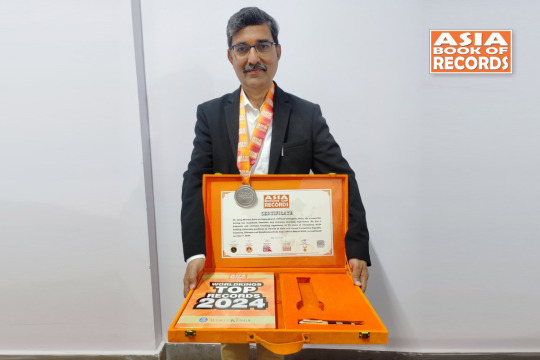
Hyderabad, India – Dr. Anup Sharma, a distinguished educator and Principal of Sri Vidyaranya International School, has earned a remarkable recognition in the Asia Book of Records for having the maximum domestic and overseas teaching experience. This prestigious achievement acknowledges Dr. Anup Sharma’s 25 years of contributions to education, both in India and internationally, making him one of the most experienced and respected figures in the field.
Dr. Anup Sharma’s career, spanning from July 1999 to March 2024, includes leadership roles and teaching positions in Chemistry across four countries—Uganda, Tanzania, Ethiopia, and Kazakhstan—along with his extensive experience in India. His ability to adapt and lead in diverse educational environments has set him apart, as he has successfully implemented effective teaching methodologies under multiple curricula including CBSE, IB, and IGCSE. This breadth of experience has now been officially recognized by the Asia Book of Records, with his title confirmed as “Maximum Domestic and Overseas Teaching Experience.”
This record is a testament to Dr. Anup Sharma’s unwavering commitment to education and his passion for nurturing young minds across the globe. Over the course of his career, Dr. Anup Sharma has not only taught thousands of students but has also held key leadership positions, shaping the academic structures and professional learning systems of several prestigious international schools.
Reacting to this monumental achievement, Dr. Anup Sharma said, "This recognition by the Asia Book of Records is both an honor and a reflection of the incredible journey I have been fortunate to embark on. Teaching in different countries has broadened my perspective and has deepened my understanding of education across cultures. This record is a celebration of that journey and the countless students, teachers, and colleagues who have been a part of it."
Dr. Anup Sharma’s tenure at institutions in Uganda, Tanzania, Ethiopia, and Kazakhstan has seen him build professional learning systems, mentor teachers, and establish innovative educational frameworks that continue to leave a lasting impact. His work, particularly in Chemistry, is known for blending rigorous academic standards with creativity, ensuring that students not only excel in exams but also develop a deep understanding of the subject.
In addition to his international experience, Dr. Anup Sharma’s contributions to Indian education are equally profound. As the Principal of Sri Vidyaranya International School, he has been instrumental in steering the school towards success, integrating global best practices with a strong foundation in CBSE curriculum.
Beyond his extensive teaching and leadership career, Dr. Sharma is also an author of several books, including Motivation 2.0: The Ultimate Student Survival Guide and Innovative Teaching by Creative Tools and Teacher’s Role, which have inspired educators and students alike.
0 notes
Text

Sourcing and Contract Farming Programs for 2025 in Uganda, Tanzania, Malawi and Madagascar
September 29, 2024
We are excited to announce that my team and I will be visiting Uganda, Tanzania, Malawi, and Madagascar from October to December 2024 to lay the groundwork for our 2025 sourcing and contract farming programs. During this time, we will focus on building strong partnerships and exploring collaboration opportunities to ensure a successful and sustainable program.
If you are an agribusiness leader, agricultural cooperative, or agrifood manufacturer interested in joining our 2025 sourcing or contract farming programs, please contact our Senior Advisor, Mr. Rajaram Gulothungan, via WhatsApp at +91 94451 04542. He will gladly provide further details and schedule a meeting with our team.
Our Product Portfolio
Vegetables:
Fruits:
Spices:
Nuts & Seeds:
Animal Feed:
Coffee & Tea:
Cocoa:
Other Agricultural Products:
Processed Products:
Sourcing Program
If you are a producer or manufacturer of any of the listed products, we invite you to explore global export opportunities with us.
Requirement: The ability to supply at least 100 metric tons per month per product.
Contract Farming Program
For the 2025 season, Sahel Agri-Sol is introducing an ambitious initiative to source white sesame, maize, and sorghum through our contract farming program. Our objective is to provide cooperatives with stable markets and fair compensation for their crops.
We seek cooperatives that can meet the following criteria:
These prices are based on pick-up from the cooperatives' warehouses, with logistics handled efficiently to ensure minimal disruption to farming operations.
Our Commitment to Agricultural Cooperatives
At Sahel Agri-Sol, we believe farming is more than a livelihood—it’s a way of life. Our contract farming program is built on trust and long-term collaboration, providing partners with significant benefits, including:
We are equally dedicated to environmental sustainability. Our practices are designed to protect soil health, water resources, and biodiversity, ensuring the longevity of agriculture in Africa. This partnership provides cooperatives with the tools and expertise to adopt sustainable methods, helping secure a thriving future for the region.
We look forward to working together to advance the growth of the agricultural sector in 2025 and beyond.
Warm regards,
Kosona Chriv
Chief Sales and Marketing Officer
Solina / Sahel Agri-Sol Group
Sahel Agri-Sol
Hamdallaye ACI 2 000,
« BAMA » building 5th floor APT 7
Bamako
Mali
Phone: +223 20 22 75 77
Mobile: +223 70 63 63 23, +223 65 45 38 38
WhatsApp/Telegram global marketing and sales : +223 90 99 1099
Email: [email protected]
Web sites
English https://sahelagrisol.com/en
Français https://sahelagrisol.com/fr
Español https://sahelagrisol.com/es
简体中文 https://sahelagrisol.com/zh
عربي https://sahelagrisol.com/ar
Social media
BlueSky @sahelagrisol.bsky.social https://bsky.app/profile/sahelagrisol.bsky.social
Facebook https://www.facebook.com/sahelAgri-Sol
LinkedIn https://www.linkedin.com/company/sahel-agri-sol
YouTube https://www.youtube.com/channel/UCj40AYlzgTjvc27Q7h5gxcA
Sahel Agri-Sol, an agribusiness group headquartered in Abidjan, Ivory Coast, with operations spanning West and East Africa, is committed to bringing the finest agricultural products from the Sahel and surrounding regions to the global marketplace.
Our mission is rooted in promoting inclusive economic growth, fostering sustainable development for farming communities, and preserving their cultural and environmental heritage.
By partnering closely with agricultural cooperatives and local producers across the Sahel, West, and East Africa, we guarantee fair compensation for their premium crops, driving prosperity and resilience in rural areas.
#Agriculture #Farming #SourcingPrograms #ContractFarming #Sustainability #Agribusiness #UgandaAgriculture #TanzaniaAgriculture #MadagascarFarming #ExportOpportunities #CocoaProducts #CoffeeTrade #SorghumFarming #SesameSeeds #MaizeProduction
Photo: Coffee tree in Uganda (credit: Venture Uganda Travel / Flickr CC BY 2.0)
Read more at https://sahelagrisol.com/en/news/66f7b0d46e2754c1df167c36
0 notes
Photo
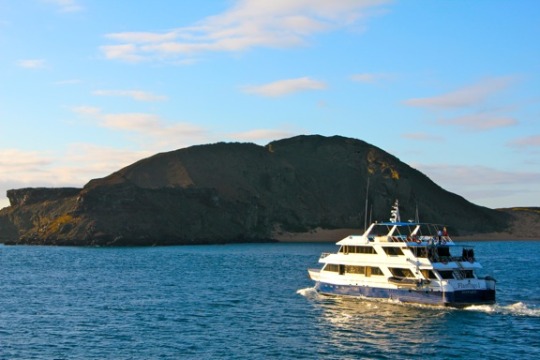
Original content owned & copyrighted by Green Global Travel.
Cruises have gotten a bad rap lately: One recent scientific study found that air quality on a cruise ship deck was “worse than the world’s most polluted cities.”
But not all cruise companies feature gigantic cruise ships carrying 5000+ passengers. In our eyes, small ship cruises are much better for travelers, locals, and the environment alike.
The best small ship cruise lines typically have less than 300 passengers, a lower guide-to-passenger ratio, and expert local guides. These small luxury cruise ships have become increasingly popular in recent years, offering a more intimate and immersive travel experience.
Some small luxury cruises focus squarely on nature and wildlife, while others focus more on the history and culture of a destination. But in general, small cruises are less about the amenities of the ship itself and more about exciting shore-based adventures.
Whether you’re taking a river cruise in READ MORE: The Importance of Community-Based Tourism
WHY SMALL SHIP CRUISES ARE SUPERIOR
Galapagos Islands Cruise Ship – The Eric by Ecoventura
More Personal Space
With the On a luxury cruise ship packed with several thousand people, you often feel like a nameless face among the huddled masses. But on a smaller ship with 20-50 people, you feel more like a treasured guest, with ample room to roam.
This makes it much easier to find your own personal space away from the crowd, to have quiet time or special moments as a couple or family.
READ MORE: 0 Romantic Places for Your World Travel Bucket List
Drinking curacao on the island of Curacao
Better Personal Service
When you’re just one of the 5,000 cruisers packed into a huge floating city, it’s unreasonable to expect the attention to detail that comes with four-star service.
For travelers willing to sacrifice luxury in exchange for rock-bottom prices, the affordability and But there’s also a lot to be said for the value of the experiences you get on small boat cruises. There, all the staff (including the cruise director) knows your name and preferences, and can provide more personalized recommendations.
Having a bartender who knows you want a Blue Hawaiian with your Happy Hour appetizers may not make or break your trip. But traveling with a company who makes you feel like more than just a number-coded wristband goes a long way towards making your trip feel special.
READ MORE: The Top 0 Things to Do in Curaçao
Peruvian Amazon River Cruise excursion – swimming in the Amazon River
Connect with Like-Minded People
When you’re on a small ship with just 20-50 passengers for a week to 0 days, you tend to get to know everyone on board to some degree.
Instead of being sat at the same table with the same people night after night, on small cruises there seems to be an unspoken agreement that passengers will swap dining tables nightly.
It’s like a game of musical chairs, giving you plenty of opportunity to find out who you click with.
Inevitably, you’re bound to meet a handful of folks that share your same ideals. Especially when you take a nature/wildlife or history/culture-focused cruise, which each tends to attract a certain type of traveler.
Going on life-changing adventures with perfect strangers can create some surprisingly strong bonds. Perhaps you’ll even meet your future travel buddies!
READ MORE: Small Ship Cruising the Peruvian Amazon
Peruvian Amazon River Cruise Boat docks on the river bank
Small Ships Go Where Big Ships Can’t
You’ve heard the old saying, “Size doesn’t matter”? Well, in the case of cruise ships, it does. And in this case, bigger is very rarely better.
Small ships are simply more nimble than large ships. Unless you’re going to a mega port, big cruise ships often have to ferry their entire passenger load back and forth via small boats or Zodiac rafts.
We have great memories of our small ship cruise through the Greek Islands. Although our boat docked in When you’re cruising in places like the rivers of Europe or the READ MORE: Happy Accidents on Aegina Island, Greece
Galapagos Islands Cruise gives you intimate experiences with Galapagos wildlife
Exclusive Experiences
One of our favorite things about travel is getting a chance to learn first-hand about the history, culture, nature, and wildlife of a destination.
While other travel bloggers may prefer to explore places on their own, we love the knowledge we gain by traveling with local experts.
As a longtime professional writer, I’m continually asking our guides questions, taking notes, and interviewing local people. We ultimately use a lot of this information to make our posts more in-depth and authoritative.
Because the number of people on small ship cruises is limited, there is usually at least one guide for every 8 to 2 passengers. With such intimate access to an expert, you’re virtually guaranteed to have once-in-a-lifetime experiences.
READ MORE: NatGeo’s Don George on Travel Writing
THE WORLD’S BEST SMALL SHIP CRUISES
Africa Cruises: Nile River Cruise, Seychelles Cruise, Botswana Cruise
Antarctica Cruises: Antarctica Cruise, New Zealand’s Sub-Antarctic Islands Cruise
Asia Cruises: India Cruise, Philippines islands Cruise
Caribbean Cruises: Coastal Cuba Cruise, Lesser Antilles Cruise
European Cruises: Greek Islands, European Christmas Markets Cruise, Black Sea Cruise
North America Cruises: Northwest Passage, Alaska Inside Passage Cruise
South America Cruises: Chilean Fjords Cruise, Galapagos Islands Cruise, Peruvian Amazon Cruise
South Pacific Cruises: Great Barrier Reef Cruise, Micronesia Cruise, Polynesia Cruise
CRUISES
Elephants along the Chobe River (Botswana) Image by hbieser from Pixabay
Chobe River Cruise (Botswana)
Botswana is currently on our African safari bucket list, primarily because of the country’s forward-thinking approach to READ MORE: 55 Interesting Facts About Elephants
Nile River Cruise, photo via Pixabay
NILE RIVER CRUISE
If you’re interested in ancient history, READ MORE: 20 Longest Rivers in the World
Seychelles Cruise via Pixabay License
Seychelles Cruise
Located nearly ,000 miles off the coast of mainland Africa east of important marine areas. Together, these marine reserves cover more than 8,000 square miles.
The Seychelles are collectively very small, with a total population of around 94,000 people spread across 77 square miles of land. But their natural beauty makes them a favorite on lists of the world’s most beloved islands, with some visitors describing it as like “a garden of Eden.”
Highlights include the Seychelles National Botanical Gardens, Curieuse Marine National Park, Veuve Nature Reserve, and Morne Seychellois National Park. About 42% of the archipelago is set aside for conservation, protecting wildlife such as the rare Seychelles Black Parrot, Seychelles Giant Tortoises, and some of the world’s largest seabird colonies.
A Seychelles cruise is the best way to explore the islands’ myriad attractions. These range from idyllic READ MORE: The World’s 30 Best Exotic Islands to Visit
CRUISES
Antarctic Cruise
There’s a lot of very good reasons why taking a cruise to The Antarctic peninsula is also one of the world’s best places for watching wildlife. We saw everything from pods of Orcas and READ MORE: 30 Antarctic Animals You Can See on an Antarctic Cruise
Rockhopper Penguin image by Michael Frankenstein from Pixabay
Cruising New Zealand’s Sub-Antarctic Islands
You may know that New Zealand is divided into a North and South island. But did you know that the country also boasts remote archipelagos of islands, which have been collectively named as a UNESCO World Heritage Site for their pristine wilderness and READ MORE: Ecotourism in New Zealand (Top 0 Things to Do for Nature Lovers)
CRUISES
Brahmaputra River, photo via Pixabay
Brahmaputra River Cruise (India)
The northeast Indian state of Assam, which shares its border with Bhutan and Bangladesh, has emerged in recent years as a bright spot in Asian ecotourism
.
This is thanks in large part to Kaziranga National Park, which is a protected UNESCO World Heritage Site.
A luxurious cruise down the mighty Brahmaputra River is arguably the best way to explore the region, offering amazing opportunities to see some of the region’s Elephants to Sloth Bears, the endangered South Asian River Dolphin, and thousands of bird species. In short, it’s a must-see for animal lovers!
READ MORE: Indian Animals: A Guide to 40 Incredible Indian Wildlife Species
Philippines Islands Cruise image by Guy Goddard from Pixabay
Cruising the Philippines islands
Located in Southeast Asia near READ MORE: Top 5 Things to Do in Coron, Palawan (Philippines)
CRUISES
Cuba Mountains, photo via Pixabay
Costal Cuba Cruise
President Obama loosened the decades-long restrictions on Americans traveling to Cuba
several years ago, causing a dramatic surge of interest in traveling to the Caribbean island.
With Donald Trump actively working to reverse these improved diplomatic relations, there’s never been a better time to explore mass tourism.
Lesser Antilles Cruise
When most Americans think of the Caribbean, they tend to think of perennial sun/surf/sand hotspots such as the Bahamas, Cayman Islands, and Jamaica.
But the more remote islands of the Lesser Antilles (which form the eastern boundary of the Caribbean Sea and the Atlantic Ocean) are generally less over-developed and more pristine than those crowded mass tourism destinations.
Included among the Lesser Antilles islands are Martinique, St. Lucia, Saba, Sint Eustatius, and Grenada, which has recently emerged as a haven for ecotourism. Popular activities in the region range from bird watching and snorkeling/Dominica. From the gorgeous waterfall and diving READ MORE: 20 Best Caribbean Islands to Visit
CRUISES
The Swallow’s Nest on the Black Sea in Crimea image by Irina Rassvetnaja from Pixabay
Black Sea Cruise
As bodies of water go, the Black Sea is pretty strange. On the map, this inland sea looks more like a giant lake, connected to the Aegean Sea (and the Mediterranean) by the narrow Bosphorus Strait.
But, with 68,500 square miles of surface area and a maximum depth of 7,257 feet, the Black Sea is considerably bigger than the ancient archaeological sites.
Must-see sites you can visit while cruising the Black Sea include Instanbul’s Hagia Sophia and Blue Mosque, Romania’s Danube River Delta, the Ukranian city of Odessa, and Sochi Olympic Park, the first theme park in all of Russia.
READ MORE: 40 Fascinating Facts About Russia’s Amur Leopard
Christmas Market in Hamburg, Germany via Pixabay license
European Christmas Market Cruise
Although we’re not at all religious, our family goes bonkers for Christmas, especially anything to do with READ MORE: 75 Christmas Traditions Around the World
Greek Islands Cruise
From to the ancient history of Athens
to Meteora’s majestic mountains, mainland Greece has plenty to offer travelers with an interest in nature, culture and history.
But for a true taste of Greek tradition, it’s hard to beat small ship cruises through the countless s are tiny (7.4 to 59 square miles) and quaint: Many mainland residents have vacation homes there, so it’s a great place to catch locals in a celebratory mood. They’re also considerably less crowded with tourists than some of the more famous islands.
The Cyclades, with around 220 islands, is the densest and most popular grouping in Aegean archipelago thanks to Delos, Mykonos, and Santorini. For ancient history, the Dodecanese Islands (especially Rhodes) and Crete are hard to beat.
READ MORE: 40 Photos Of Greece That Will Make You Want To Go
AMERICA CRUISES
Northwest Passage Cruise
The Arctic Circle is considered to be one of the planet’s last truly wild places.
The Arctic region encompasses northern Alaska and A small ship cruise of the historic Northwest Passage is arguably the best way to explore the Arctic. It offers unique opportunities to see explorer’s bucket list.
READ MORE: Polar Bears Photo Gallery
Cruising in Glacier Bay National Park, Alaska
Alaska Inside Passage Cruise
Stretching from Washington State’s Puget Sound north to the Alaska Panhandle, the Inside Passage is a coastal route in the Pacific Northwest. Popularized during the Klondike Gold Rush, the route allows ships to avoid the bad weather and often rough waters of the open ocean.
Today, around 36,000 boats navigate portions of this route each year, from massive cruise ships and freighters to smaller AdventureSmith and Alaskan Dream Cruises. The Alaskan portion encompasses ,000 READ MORE: Visiting the Alaska Wildlife Conservation Center
AMERICA CRUISES
Caguach Island, Chiloé Archipelago, photo by Robert Gould CC BY-SA 3.0
Chilean Fjords Cruise
When it comes to Chilean travel, the wine region around Santiago and the dynamic landscapes of Torres del Paine National Park in READ MORE: Exploring Grytviken, South Georgia Island
Swimming with Galapagos Penguins
Galapagos Islands Cruise
A small ship is vital if you want to really explore the The Voyage of the Beagle, Thanks to its remote location and UNESCO/National Park protection, the wildlife of the Galapagos is plentiful.
Endemic species such as READ MORE: 30 Amazing Galapagos Island Animals
Peruvian Amazon River Cruise
Amazon rainforest
’s total area of 2,00,000 square miles. Unfortunately, that country’s unsustainable exploitation of its natural resources has damaged this once-pristine ecosystem, perhaps irreparably.
For a better taste of the Amazon rainforest’s world-famous biodiversity, you’ll want to take a READ MORE: Cruising the Peruvian Amazon
PACIFIC CRUISES
Great Barrier Reef, photo via Pixabay
Great Barrier Reef Cruise
Don’t believe the hype! Click-bait headlines claimed Australia’s Great Barrier Reef dead in 206 after a cheeky column by Rowan Jacobson appeared in Outside. But news of the demise of the place UNESCO called “the most impressive marine area in the world” was greatly exaggerated.
Yes, the reef suffered READ MORE: 0 Awesome Australian Road Trips
Manta Ray in Micronesia, photo via Pixabay
Micronesia Cruise
Spread across the western Pacific northeast of Papua New Guinea, the Federated States of Micronesia is comprised of more than 600 islands.
The country is made up of four island states– Pohnpei, Kosrae, Chuuk, and Yap– and known for its palm-shaded beaches, ancient ruins, and thriving indigenous cultures. If you want to see the best of them in one trip, a cruise is really the only way.
The islands are widely ranked among the READ MORE: 5 Rare Sharks Worth Saving
Polynesian Islands Cruise
There are so many beautiful Polynesian Islands, it would be impossible to pick just one favorite.
But, with less than 2,000 miles separating tropical hotspots such as Tahiti and Fiji, a small-ship cruise offers the perfect way to explore numerous gorgeous getaways in just a few weeks.
From pearl diving in Bora Bora and birdwatching in the Cook Islands to READ MORE: 2 Photos of Tahiti To Fuel Your Fantasies
The post 20 Best Small Ship Cruises for Your World Travel Bucket List appeared first on Green Global Travel.
#><strong>Europe</strong></span></a>#008000;#><strong>Greece</strong></span></a>#>jostling#><strong>Santorini</strong></span></a>#><a#><strong>wildlife#><strong>commercial#><strong>canoe#>Egypt’s#><strong>Tanzania</strong></span></a>#><strong>beaches</strong></span></a>#>Antarctica</span></strong></a>#>driest</span></strong></a>#>polar#>Penguins</span></strong></a>
0 notes
Photo
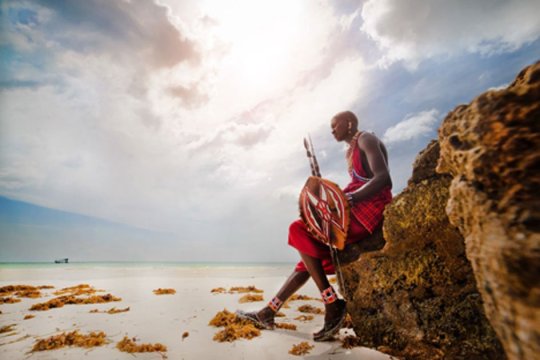
The Maasai Legend Behind Ancient Hominin Footprints in Tanzania
In 1976 paleoanthropologist Mary Leakey and other scientists reported that they’d found ancient hominin footprints at a site in Laetoli, northeastern Tanzania. The footprints were frozen in volcanic deposits from the Pliocene, an epoch that lasted from 5.333 million to 2.58 million years ago. The team hypothesized that the footprints belonged to an extinct hominin species famously known as Lucy . The species’ scientific name is Australopithecus afarensis .
Additional footprints were reported in 2016 by a research team made up of scientists from Tanzania and Italy. These footprints are about 150 meters (492.17 ft.) away from the original discovery. This new trackway is surrounded by hundreds of footprints belonging to other mammals and birds; there are even frozen raindrop impressions. The hominin footprints were left by two bipedal (that is, walking on two legs) individuals walking on the same surface, at the same time, in the same direction and at the same moderate speed as those reported by Leakey and her colleagues.
Taken together, the two groups of footprints testify to the presence of at least five bipedal early hominins moving as a group through the Laetoli landscape. Both the new and the older footprints have provided scientists with some clues in the search to understand human biological evolution
What Do Locals Think of the Hominin Footprints?
But while the science is crucial, it is also important to know what the people who live in and around Laetoli make of these ancient footprints. What do they think the footprints represent? My colleagues and I wanted to find out . So we interviewed local Maasai with whom we were working at the Laetoli and organized some focus group discussions with others within the area as well as nearby villages of Essere, Enduleni and Kakesiyo. Residents of these villages are about 35,000 and they have been living in the area for generations. The Maasai people connect Laetoli footprints to the tale of Lakalanga, a strong hero who helped them win a battle against a neighboring community. According to the story – which is consolidated into the local community oral tradition – Lakalanga was so big that wherever he walked, he left visible tracks on the ground. Although there is no time reference regarding the legendary Lakalanga, interviewed elders said the story is deeply rooted among the Maasai. Since the legendary Lakalanga occupies a unique position among the Maasai community and because there is a myth linking him with the footprint makers, there is a need to incorporate these perceptions in the interpretation and preservation of footprints. This undertaking will reduce the chance of people harming the footprint site and increase the link between local people and their history.
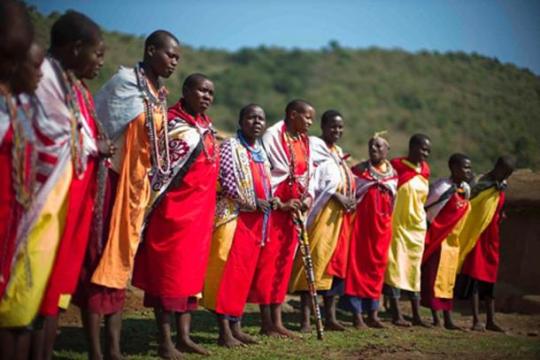
Why Footprints Matter
Fossil bones and teeth can provide paleontologists with a great deal of data about various aspects of human evolution. Footprints are potentially much more informative. Footprint sites can be interpreted as prehistoric snapshots of the deep past, having been formed in a relatively short time span.
In fact, after being impressed on the ground, these ephemeral traces of past life can fossilize only under extremely rare geological conditions. Using footprints, scientists can reconstruct locomotion, body size, speed, and variability of extinct creatures.
Generally, fossil footprints are very useful paleontological tools. Their features can help identify their makers and also to infer biological information. Nearly all the fossil human tracks discovered so far have been referred to species of the genus Homo. Laetoli is the only exception to the record.
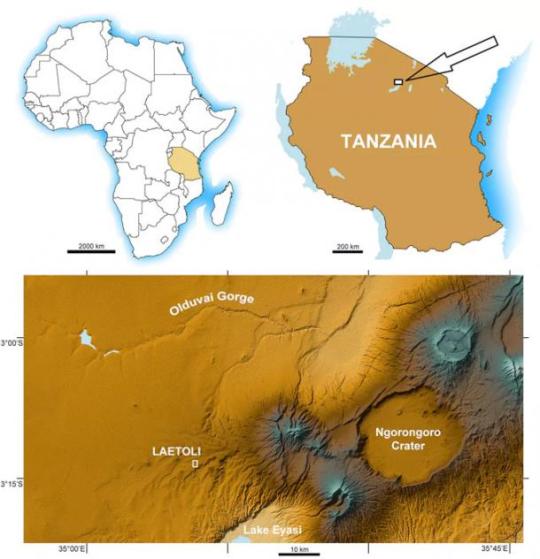
Laetoli is in northern Tanzania at the southern margins of the Serengeti Plains in the Ngorongoro Conservation Area. The area has several other world-famous paleoanthropological localities: Olduvai Gorge , Lake Ndutu, and Nasera Rock.
From a scientific point of view, one of the most sensational results of the 2016 study that identified the second trackway at Laetoli concerns one track maker’s body size. One individual’s footprints are surprisingly larger than those of the other members of the group, suggesting an estimated stature of about 165 cm, or about 5 feet 4 inches.
This exceptional body size, which falls within the range of modern Homo sapiens maximum values, makes it the largest Australopithecus afarensis individual identified so far.
The Maasai’s Interpretation
The large body size aspect is also reflected in the local community’s interpretations of the Laetoli hominin footprints.
The Maasai we spoke to and held discussions with knew about the footprints. They mainly knew about the animal footprints because they are scattered over various volcanic tuff on the Laetoli landscapes. The Maasai who live at Laetoli and on the outskirts visit and pass through the area regularly as they herd their livestock. The narratives about Lakalanga’s footprints have also become part of the folklore of Maasai living further away.
It was during our discussions with the local community that we learned of the story of Lakalanga, his big strides and visible tracks. They believed that Lakalanga was energetic and bigger than any other member of the society.
The myths do not comply with a part of our scientific interpretation suggesting a social group of one large male, two or three females, and one juvenile. The narratives do not interpret the footprints to belong to Lakalanga and his family. Instead, the narratives link the footprints with Lakalanga and other Maasai warriors who were not as large and energetic as him (Lakalanga)
The discovery in 2016 of the second set of footprints – and particularly the large footprints in that set – offered further confirmation to the Maasai that the hero warrior Lakalanga really existed.
Similar Story, Different Place
Linking footprints with the story of Lakalanga is not unique at Laetoli. There are similar stories from other sites across the world where local people associate footprints with gods and heroes.
For example, in about 450 BC, Herodotus reported that footprints found along the banks of Tyras River in Moldavia were associated with gods and heroes visualized as giants. Also, footprints from the Gallipoli Peninsula in north-eastern Turkey are linked with the great hero-athlete from the Trojan war.
This just goes to show that local people curious about footprints will always seek explanations on who made them. Hence local interpretations.
Top Image: Portrait of a Maasai warrior in Africa, Diani beach Source: shangarey / Adobe Stock
The article ‘ The Maasai legend behind ancient hominin footprints in Tanzania ’ by Elgidius Ichumbaki and Marco Cherin was originally published on The Conversation and has been republished under a Creative Commons license.
47 notes
·
View notes
Text
Tagged by the lovely @through-my-shadow. Sorry for replying so late. I promise I didn’t forget you, was just busy for a bit
These were some good questions, really made me think lol
1. Where does your username come from/what does it mean?
My name is Maria. I have an Aussie friend and, for those who don’t know, Australians have a habit of adding z’s to a name for uhh fun I guess lol. So Garry becomes Gazz or Gazzer, Joyti would be Jozz (I guess), and Maria turns into Mazz :) Sometimes I’m called Mazzeroo (Mazz + kangaroo) to really stress the Aussie part of it. That name was taken (don’t remember if it was here or some other platform), so I just added another M in front to make it mmazzeroo :)
2. One city/country you want to visit before you die?
Everywhere lol I’ve never been outside Europe so… I’d love to see Morocco, Egypt, India, Australia, Mozambique, Angola, Botswana, Kenya, Tanzania, Brazil, Ecuador, Peru, cross-country ride in the US, see Canada’s vastness. When my unknown-to-me millionaire uncle in a far away country dies and leaves his fortune to me I’d also love to go see the Seychelles, Mauritius, and Tahiti lol
3. If you could resurrect one historical figure who would it be?
Just one?!?! *several hours later* I’ve managed to narrow my list to the following:
- Margaret I, (1353-1412), queen consort of Norway and Sweden and later ruler in her own right of Denmark, Norway and Sweden. She was the founder of the Kalmar Union, which spanned Scandinavia for over a century. Margaret was known as a wise, energetic and capable leader, who governed with farsighted tact and caution. She was derisively called "King Breechless", one of several mean nicknames invented by her rival Albert of Mecklenburg, but was also known by her subjects as "the Lady King", which became widely used in recognition of her capabilities.
- Elizabeth I, (1533-1603), Queen of England and Ireland from 17 November 1558 until her death on 24 March 1603. Sometimes called the Virgin Queen, Gloriana or Good Queen Bess, Elizabeth was the last of the five monarchs of the House of Tudor. Don’t think she needs anymore introduction really :)
- Last but not least I’d bring back what I think would be an amazing trio: Mozart, Freddie Mercury and Prince 💜💜💜 ( @callmedewitt, @thebeautyofjoneryzz )
4. If you could only watch one film for the rest of your life, which one would it be?
Sound of Music. Self-explanatory. I’d like to think @jalenmara would agree with me *fingers crossed*
5. Do you believe in reincarnation?
Yes, I do, because I think there’s too much to learn and see in this world than can be done in just one lifetime. Also, because I find solace in the idea that I can hopefully get to see all (or just some) of the loved ones I’ve already had to see cross the rainbow bridge...
6. A scent that immediately makes you think of your childhood?
Freshly melted dark chocolate. My granddad watched me the first few years of my life while my parents were working. He was a retired pastry maker - chocolates, marcipan, Danish pastries etc. (For reference, I’m a native Dane btw). He would make it at home in his kitchen and I still remember waking up from naps to the smell of freshly melted dark chocolate. My granddad would of of course let me lick the bowl lol. I grew up having Danish pastries and confectionery chocolates almost daily because of my granddad. Didn’t know how lucky and spoiled I was lol
7. If you could plan your last meal, what would it be?
Beans on toast and a strong cup of tea? I don’t know. Would it really matter? If I knew it’d be my last meal I don’t think I’d be very hungry anyway. If I didn’t know then it’d be fine with a meal like this for me. Having comfort food as a last meal would be fitting somehow I feel.
8. Know any good jokes?
This one always makes me laugh because it’s so stupid + I can hear Eddie laughing at it himself:
“A bear and a rabbit were taking a shit in the woods. And the bear turns to the rabbit and says, ‘Excuse me, do you have problems with shit sticking to your fur?’ And the rabbit says, ‘no." So the bear wiped his ass with the rabbit.” - Eddie Murphy Delirious, 1983
This one always makes me laugh because it’s so stupid + I can hear Eddie laughing at it himself

9. Most found colour in your wardrobe?
Probably blue and black. It goes well with pretty much everything else
10. Do you have any pets?
Grew up with both cats and dogs so I’m not one of those who’ll ever say one is better than the other. They require different things and certain lifestyles fit one better than the other I’d say. All that just to say that currently I have a cat:
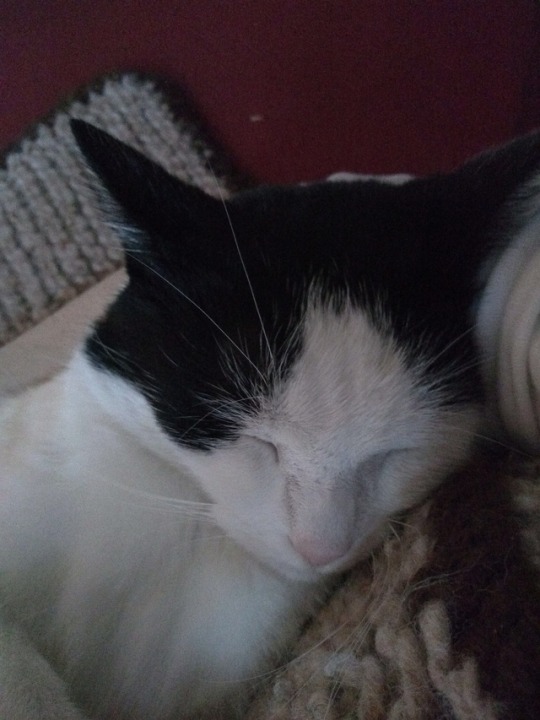
11. Post a gif of the last TV show you watched.

Sara Ramirez in a suit, sometimes walking around with necktie and suspenders...it does something to me. The political topics being portrayed in the series are good too lol
Sorry, don’t have new questions for new people...
8 notes
·
View notes
Text
Fwd: Postdoc: UCalifornia_Berkeley.MosquitoPopulationBiology
Begin forwarded message: > From: [email protected] > Subject: Postdoc: UCalifornia_Berkeley.MosquitoPopulationBiology > Date: 7 October 2022 at 06:06:00 BST > To: [email protected] > > > POSTDOC POSITION IN MOSQUITO POPULATION BIOLOGY > > The Marshall Lab at the UC Berkeley School of Public Health is seeking to > hire a postdoctoral scholar to work on an exciting project to quantify > mosquito movement patterns, life history and population size based on > kinship data. The position is initially for one year, with the possibility > of extension. Start date is flexible. Salary is commensurate with > experience, and full benefits are included. > > The position is funded by an NIH grant to develop close-kin mark-recapture > (CKMR) methods to estimate movement and demographic parameters of Aedes > aegypti, a major vector of dengue, Zika and chikungunya viruses throughout > much of the world. Alongside this, we are exploring the suitability of CKMR > methods for Anopheles malaria vectors in sub-Saharan Africa. To learn more > about the project, please see our pre-print here: > https://ift.tt/qyrVZut > > The successful candidate will work with our network of collaborators at the > Mosquito Genomics Unit, QIMR Berghofer Medical Research Institute > (Australia), the Environmental Health Institute, National Environment > Agency (Singapore), and the Ifakara Health Institute (Tanzania). There will > also be opportunities to contribute to our other collaborative projects > with a consortium of mathematical modelers, molecular biologists, > ecologists and epidemiologists, mostly throughout the University of > California system. > > An ideal candidate will have: > * A strong background in applied mathematics, statistics and/or computer > science > * Experience with population genetics, genomics or > ecological/epidemiological modeling > * An interest in mosquitoes and/or mosquito-borne diseases > * An interest in mentoring students and promoting diversity, equity and > inclusion in research > > If you are interested in the position, please send: i) your CV, including a > list of publications, ii) PDFs of your two most significant > publications/manuscripts to date, iii) the names and email addresses of > three potential referees, and iv) a cover letter describing your research > interests and motivations for joining our lab to John Marshall at > [email protected]. Inquiries are also welcome. Additional > information about the research in our lab can be found at > https://ift.tt/HV2muxG. The position will remain open until filled. > > UC Berkeley has large and vibrant public health, ecology and computational > biology communities spanning the School of Public Health, the Department of > Integrative Biology, the Department of Environmental Science, Policy and > Management, the Center for Computational Biology, the Innovative Genomics > Institute, and more. UC Berkeley offers competitive salaries, excellent > benefits and is an equal opportunity employer. The City of Berkeley and the > surrounding San Francisco Bay Area is known for its progressive values, > vibrant social and cultural scene, and beautiful surrounding environment. > > “Marshall, John M.”
0 notes
Text
The 6th Chapter: “5 Years of Mesmerizing Success Journey”
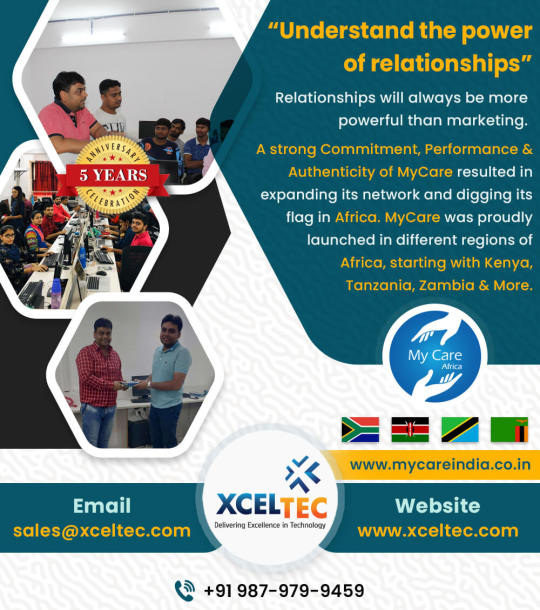
“Understand the power of relation”
MyCare - The Leading Telemedicine Platform For all Healthcare Solutions is an E-healthcare application that connects patients with doctors digitally over a secured platform.
In the span of 1 year from 2018-2019, with a strong commitment, performance & authenticity of MyCare, it was expanded and flagged itself in Africa.
Starting with Kenya, we slowly and gradually launched MyCare in different regions of Africa like Tanzania, Zambia & More.
So as Xceltec and its venture were drastically showing the performance we were sure to achieve a great milestone in the coming year.
Coming up next – “The Year of Achieving Milestone - 2020”
Keep watching out our exciting Journey, like our page & Stay Tuned for Next Updates.
Visit our web: www.xceltec.com
Call: +91 987-979-9459 / +1 919-400-9200
E-mail: [email protected]
1 note
·
View note
Text
New Job Vacancy BOHEMIA Project, Kibiti/Rufiji at Ifakara Health Institute (IHI) - Research Officer
New Job Vacancy BOHEMIA Project, Kibiti/Rufiji at Ifakara Health Institute (IHI) – Research Officer
Work station: Kibiti/Rufiji, Tanzania Ifakara Health InstituteIfakara Health Institute (IHI) is a leading research organization in Africa, with strong track records in developing, testing and validating innovations for health. We are driven by core strategic mandate for research, training and services. The institute’s work spans across a wide spectrum of sciences including biomedical and…

View On WordPress
0 notes
Text
Guaranty Trust Bank (GTB) Graduate Trainee Programme 2021 for young Nigerian Graduates.
Application Deadline: March 22nd 2021
Are you a fresh graduate, young, vibrant and passionate about selling and delivering exceptional customer service at any scale? Then, it’s time to join the Proudly African and Truly International brand. Guaranty Trust Bank plc is a foremost Financial Institution with business outlays spanning Anglophone and Francophone West Africa, East Africa and Europe. The Bank presently has an Asset Base of over N3.11trillion and employs over 10,000 professionals in Nigeria, Cote D’Ivoire, Gambia, Ghana, Liberia, Kenya, Rwanda, Uganda, Sierra Leone, Tanzania and the United Kingdom.
At Guaranty Trust Bank plc, our mission is to build an enduring Proudly African and Truly International Institution that plays a fundamental role as a Platform for Enriching Lives by building strong, value adding relationships with our customers, stakeholders and the communities in which we operate.
Our customers are at the centre of everything we do. We want to satisfy their financial needs and help them succeed financially.

Join our diverse and inclusive team where you will feel valued and inspired to contribute your unique skills and experience. We are recruiting to fill the vacant position below
Job Title: Graduate Trainee
Location: Nationwide Required Qualifications
Minimum of a bachelor’s degree from a reputable university
Minimum of 5 O ’Level credits (including English and Mathematics)
Completion of NYSC is mandatory
Age
Not more than 26 years old
For More Information:
Visit the Official Webpage of the Guaranty Trust Bank (GTB) Graduate Trainee Programme 2021
from WordPress https://ift.tt/3vDedXN via IFTTT
0 notes
Text
AstraZeneca Pushing the boundaries of science to deliver life-changing medicines
New Post has been published on https://newscheckz.com/astrazeneca-pushing-the-boundaries-of-science-to-deliver-life-changing-medicines/
AstraZeneca Pushing the boundaries of science to deliver life-changing medicines

AstraZeneca delivers life-changing health access initiatives across African Continent in 2020.
The World Health Organization (WHO) identifies Non-Communicable Diseases (NCDs) as the number one cause of death worldwide [1], disproportionately affecting people in low and middle income countries [2].
Similarly, the World Economic Forum (WEF) has predicted that NCDs will cost the worldwide economy more than $47 trillion in lost productivity and wages by 2030 [3].
Through public and private partnerships (PPP’s), these challenges have started to be addressed to ensure that an equitable and inclusive healthcare system is available in the future to respond to the healthcare needs of all Africans.
Barbara Nel, AstraZeneca’s Country President for African Cluster (South Africa, Sub Sahara and French Speaking Africa) said “At AstraZeneca we recognise that breakthrough science and healthcare doesn’t happen in isolation, it is the result of collaboration and partnership.
Our commitment to our patients and our responsibility to work closely with partners and stakeholders is integral to our work in Africa to create a sustainable impact and to seek answers to health challenges.”
AstraZeneca has been working with governments, policy makers and regulatory bodies in Africa for over 27 years to ensure that more patients in Africa have access to high quality healthcare, from prevention and screening programmes to supporting early intervention, treatment and disease management.
This year alone has seen AstraZeneca launch and expand a number of health access programmes that span non- communicable diseases in several African countries.
The first of our new initiatives, Africa PUMUA Initiative (breathe) addresses one of the most common non-communicable diseases (NCDs) – asthma.
Through partnership with governments, healthcare professionals (HCPs) and health societies in Ethiopia, Kenya and Ghana, the Africa PUMUA Initiative aims to improve paediatric and adult asthma management across the public and private sectors.
It focuses on local health system strengthening, health worker capacity building, awareness and education activities and equitable access to AstraZeneca’s respiratory medicines for patients.
In addition, in South Africa, AstraZeneca has joined forces with the National Department of Health (NDoH) to shape the new and innovative National NCD screening programme.
As part of the partnership, AstraZeneca donated 10,000 electronic blood pressure (BP) machines, which will be used by healthcare workers in under-resourced communities.
The programme supports the vision of taking healthcare to the communities; utilising community healthcare workers to bring primary care closer to patients, enabling earlier access to screening and diagnosis.
AstraZeneca’s Phakamisa (uplift) initiative, launched 10 years ago, brings together different organisations to help reduce the burden of NCDs on South Africa’s public healthcare system, currently focusing on breast and prostate cancer.
Despite many gains in cancer research and treatment in recent years, breast and prostate cancer remain a growing health concern, compounded through cultural barriers, limited access to healthcare facilities and late diagnosis.
This year AstraZeneca has expanded the initiative through partnerships with multiple healthcare stakeholders.
Through strong collaboration between community, civil society, government and private entities, Phakamisa aims to improve breast and prostate cancer management in the public sector and specifically support patients in the early detection of disease, through our three-pillared approach of training, awareness and access.
Disease prevention is another critical pillar of our access to healthcare work and part of our approach to supporting the development of sustainable health systems.
Our Young Health Programme is a philanthropically funded disease prevention initiative focused on NCDs and young people aged 10 to 24 in vulnerable and under-resourced areas around the world.
Together with our partners, the Young Health Programme uses education, advocacy, research and mentorship to empower young people to make informed health choices and build more protective environments to help live longer and healthier lives.
In Africa, the programme was launched in Nairobi, Kenya in 2016, in partnership with Plan International and has just been renewed for another 5 years.
This year the Young Health Programme expanded to South Africa and Angola, partnering with UNICEF with the aim of contributing to the global goal to reach more than five million young people with NCD prevention messages, training 1,000 youth advocates, and positively shaping public policy around the world, over the next five years.
Healthy Heart Africa is AstraZeneca’s innovative programme committed to tackling hypertension and the increasing burden of cardiovascular disease (CVD) across Africa.
Since launching in Kenya six years ago and subsequently expanding to Ethiopia in 2016, Tanzania in 2018, Ghana in 2019 and Uganda in 2020, HHA has conducted over 16 million blood pressure screenings in the community and in healthcare facilities.
Trained over 7,300 healthcare workers to provide education and awareness, screening and treatment services for hypertension; activated over 800 healthcare facilities in Africa to provide hypertension services, with the establishment of secure supply chains for low cost, high-quality branded antihypertensive medicines where applicable, and identified over 2.9 million elevated blood pressure readings.
Barbara Nel: “The various partnerships and initiatives introduced and expanded this year are testament to AstraZeneca’s commitment to working together with diverse healthcare stakeholders to shape the future of healthcare in Africa.
At AstraZeneca we wish to be part of the healthcare solution, for the benefit of all patients.”
Report Content
Issue: * Content not Loading Boring Copyright Infringement Spam Invalid Contents Broken Links
Your Name: *
Your Email: *
Details: *
Submit Report

0 notes
Photo
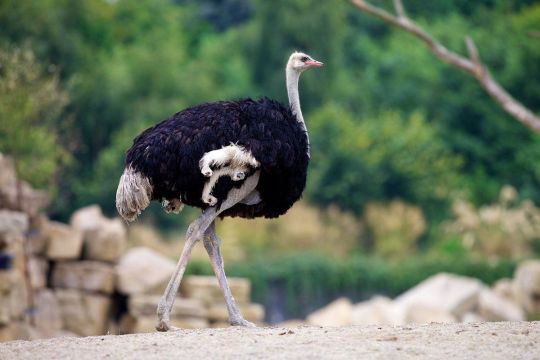
Ostrich
Ostrich is a flightless bird. He survived as the only member of the Struthio genre. They are the fastest running species with the largest eggs among birds. The weight of the bird, which is 2-2.5 meters in length, is between 130-150 kg. There are six known species. The species that lived in the Syrian and Arabian deserts called the Arab ostrich are now among extinct creatures. The most well-known species is the Masai ostrich, which lives in Tanzania and Kenya. The female of the Emu ostrich, which is shorter than the others, is taller than the male. Crested ostrich is among the most dangerous species. The innermost toe of the species, which has three fingers on its feet, is in the form of a dagger. This species, which is dangerous with kicks, can jump 1.80 meters above the ground and swim very well in the water.
What are the general features of ostrich?
These birds roam with mammals such as zebra. They do this to protect themselves. Birds that see themselves very well are protected from enemies by taking advantage of the smell feature of mammals. Although they are known as herbivorous, in some cases, they feed on invertebrates. Birds breeding with eggs make between 15 and 60 eggs at the time of incubation. The eggs are 13 cm wide, 15 cm tall and weigh 1500-1800 grams. It is 24 times larger than chicken eggs. Incubation periods are 40-44 days. Born offspring can run like elders a month later. It is the only bird ostrich with two claws in the birds. The larger nail can carry the whole body weight. This feature allows it to run quickly by pressing a small area while running. Adults can run at 60 km for 20 minutes. The length of the steps during the run is 6-8 meters. They provide viewing at an angle of 360 degrees. They can even see a small detail 1.5 km away. Their average life span is between 60-70 years. They become productive in their lives for 30 years. In the world, ostriches are hunted for their skin and meat. Also, feathers, beaks, and nails are evaluated.
What are the structural features of ostrich?
Their heads are smaller than their body. There is a hairless area on their heads and a bonnet next to it. It has upright and hard hairs on its head in a mixture of blue and red. The skull is spongy and sensitive. He may die with blows to the head. The brain of adults is 30-40 grams. Its eyes are 5 cm in diameter and cover one-third of the head. It is known as the most sensitive place of the bird, which has a flexible neck. The skin on the neck renews itself very quickly. The hairs in this area are hard and steep. These birds have no sternum. Bones are not filled with air like other birds. Their wings are very small. It is used only for balance, protecting the eggs and used for courtship during the mating period. The bird has a very strong foot structure. Its feet start from the top of the heels 50-60 cm above the ground. It can only move forward. They cannot kick sideways and back. Its feet are covered with scales and its color is gray-brown. Foot weights are between 18-20 kg. With their legs, they can carry 200-250 kg of weight. Birds that hunt for meat have red, lean, and soft meat. It contains protein, magnesium, phosphate, and potassium. 30% of their bodies consist of meat. A one-year-old bird weighs 100 kg.
What is the reproduction of ostriches?
Females that are smaller than males are in gray brown colors. They are able to breed in 2.5-3 years. The zygotes of the eggs made by females are formed before ovulation. The wings and tails of the men are white and the other parts are black. These reach puberty in 3 years. They become gruff at the time of breeding. They don't bring anyone near them. They acquire more than one wife. They make their nests in sand dunes to safe areas. They choose the most remote places in order not to be disturbed. Spawning periods are between April and September. They lay between 2-3 days in a month and take a break for two weeks. They then continue to spawn. To benefit from these birds, farming is carried out on farms.

Ostrich

Ostrich

Ostrich
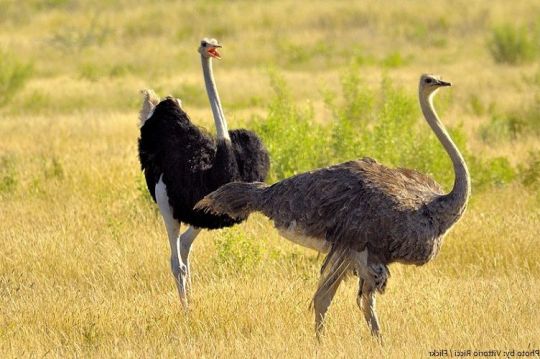
Ostrich
https://petsultan.com/ostrich?feed_id=853&_unique_id=5f1b65c6af9c3 #bird #breeds #ostrich
0 notes
Text
Meet The Scavengers Of African Savannah- The Opportunistic Carnivorous
Tanzania is a country full of surprises and wonders. Many facts are still undiscovered about the country. The country boasts more than 16 national parks and game reserves areas in which plenty of untamed wildlife can easily be spotted.
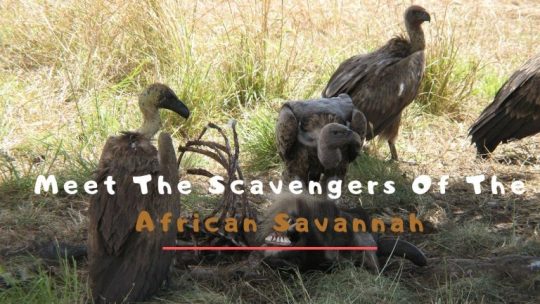
Tanzania’s safari though more famous for the “big five”, there are some of the unique species who don’t get a lot of attention but are equally important in Tanzania’s ecosystem.
Scavengers are those animals that are carnivores but don’t kill/attack prey. Usually, the big cats like lion, cheetah, and leopards hunt for their food and after eating, they mostly leave traces of food on the ground. Then scavengers swing into action, eating the food that has been left behind.
The scavengers play a vital role in cleaning up the plains of Tanzania. Without them, there would be left half-eaten bodies of animals everywhere. So they are considered as one of the vital parts of the Tanzanian ecosystem.
When you are planning for a Tanzania safari you can expect to spot some of these scavengers in close range and get an opportunity to learn about how they are helping nature to grow.
Here we are presenting few such animals and birds;
Scavenger AnimalsJackals
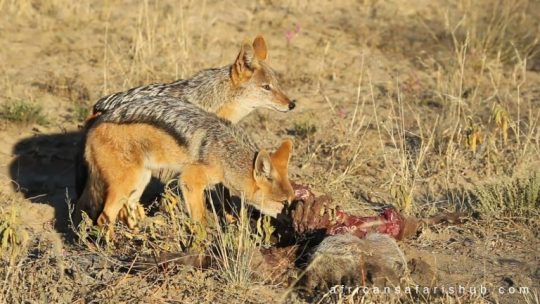
Jackals are smaller in size and belong to the Canidae family. They are one of the smart members of the Carnivora family. They usually hunt small prey in the group but mostly they are scavengers and eat the remains of kills left behind by larger predators.
Here are some interesting facts about Jackals-
They have sharp teeth and their physique gives them the ability to run for long-distance
They can run up to 10 miles mph
Jackals have a lifespan of between 8 and 10 years in the wild and up to 16 years in captivity
Jackals generally measure 38 – 51 centimeters high at the shoulder, have a body length of 70 – 86 centimeters and weigh between 7 – 16 kilograms
Body of jackal is covered with golden, rust or silver-colored black fur
Jackals have a bushy tail
With their long legs and curved canine teeth, they are well adapted for hunting
They are mostly nocturnal animals
Jackals live singly or in pairs, and are sometimes found in small packs
Jackals are very territorial
Hyena

Spotted hyenas are one of the famed scavengers who often eat the leftovers of big predators. But they also possess a great technique for hunting. Hyenas are very intelligent and skillful hunters with 50% of their food gathered by hunting and the remaining 50% is the leftover food of other predators.
Here are few interesting facts about the spotted hyenas-
Average hyenas live for about 12 years, while some can live up to 25 years.
There are 4 members of the Hyaenidae family such as striped hyena, giggly spotted hyena, brown hyena, and aardwolf.
The spotted hyena, Crocuta crocuta, is the biggest hyena species.
It can grow to between 1.2 to 1.8 meters, or 4 to 5.9 feet, in length.
The aardwolf, Proteles cristata, is the smallest hyena species.
Spotted hyenas are social and live in groups called clans.
All species are primarily nocturnal.
Spotted hyenas “laugh” when they’re trying to communicate, mostly you can hear their laughter when they are hunting.
Hyena cubs will eat meat from kills that happen near the den for 5 months.
African wild dogs
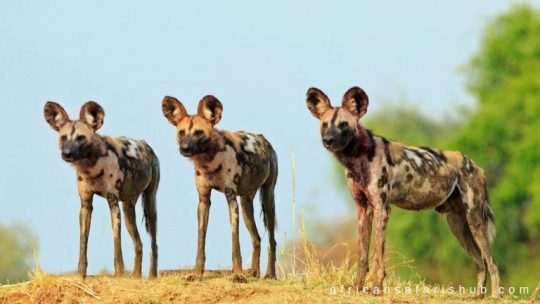
African wild dogs are the Canidae native to sub-Saharan Africa. These largest indigenous Canidae are one of the dangerous predators of Tanzania’s bushland. They also can hunt however they are dependent a lot over the big predator’s leftovers.
Here are few interesting facts about these carnivores-
Unlike other canine species, they have only four toes on each foot.
They usually give birth every year between March and June.
African wild dogs hunt mainly medium-sized antelope.
They communicate when hunting, using calls and body language to signal to each other.
African wild dogs usually live in a larger territory.
Due to their beautiful markings, they are also referred to as painted hunting dogs.
Wild dogs are classified as endangered by the International Union for the Conservation of Nature (IUCN).
In addition to the above-mentioned animals, lions and leopards also scavenge sometime while they don’t get enough food to survive. Mostly they capture food hunted by other lions or leopards.
Scavenging Birds

It’s not only animals that scavenge. There are a few bird species that scavenge and play a great role in the ecosystem. Here are a few iconic scavenging bird predators.
Vultures
Usually known as nature’s garbage men, vultures are one of the true scavengers. They are the ones who are truly known for playing a great role in cleaning the land surface and without them, the earth would get pretty stinky.
Here are a few interesting facts about them-
Vultures have wide, strong wings.
Vultures eat as much as they can at one meal.
They attach very rarely that they only attack sick and dying animals.
Vultures live in every part of the world except Australia and Antarctica.
Vultures poop on their legs to kill the bacteria from the carrion they eat.
The Latin name of these birds is Cathartes aura.
They live up to 16 years and while in captivity they live sometimes up to 30 years.
Marabou stork
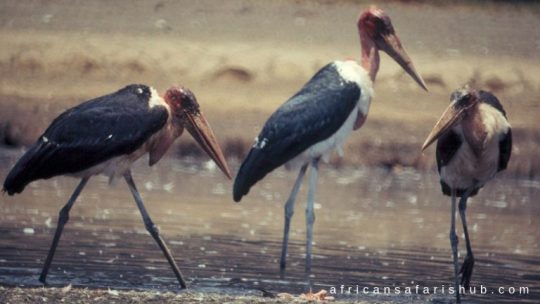
Marabou stork is one of the wired looking birds you may encounter during your Tanzania Safari tour and these are considered as meat-eaters who live by scavenging. Mostly they eat leftovers from other animals.
Here are a few interesting facts about them-
Marabou storks are large, long-legged, long-necked wading birds with a long, bare throat sac.
They are approximately 150 cm in size.
They weigh up to 9kgs.
Their diet consists predominantly of carrion, fish, termites, locusts, frogs, lizards, baby crocodiles, snakes, rats, mice, and birds.
Their incubation period is 30 to 50 days.
They lay about 3 to 5 eggs at once.
They reach their sexual maturity at the age of 4 to 5 years.
Up to 20 years in zoos, however, the life span in natural habitat is not recorded yet.
Marabou storks possess hollow leg and toe bones.
The pouch on their throat is not used for food storage and may be used during courtship.
Marabou storks nest in the dry season.
Crows

Crows are mostly one of the common sited bird species and considered extremely
intelligent. Some crows have even been noticed using basic tools. Here are few fun facts about these birds-
They have the largest brain of all birds except for parrots.
The body to brain ratio of a crow is the equivalent of a chimpanzee.
Crows have an excellent memory. They hide their food away to save it for later.
You can any time identify them by distinctive yet annoying ‘caw-caw’ sound.
They can be distinguished from rooks as they have feathers around their thighs and the base of their beak.
Crows are often described as fearless.
Crows have been known to perform ‘anting’ where they rub ants all over their feathers or lie near an anthill allowing the ants to crawl through their feathers. It’s their Self-anointing behavior to get rid of parasites.
Eagles
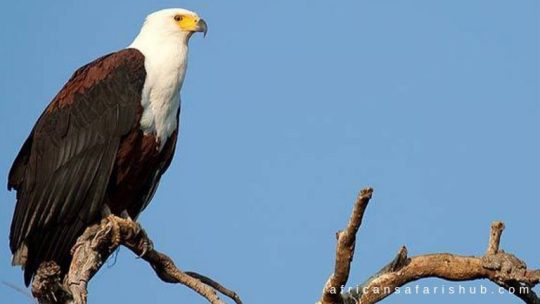
Eagles are very powerful and one of the quirky birds. This classic wild and adventurous bird is also dependant on scavenging. They also use to taking leftover food from other animals or birds.
Here are a few fun facts about them-
They mostly eat trash and stolen food
They mate for a lifetime
The male and the female take turns incubating the eggs, and they both feed their young
They’re pretty romantic birds
They can live up to 38 years
Build enormous nests high in the treetops and they hold the record of building the largest bird nest
Eagle’s nests are usually 2-4 feet deep and 4-5 feet wide
Apart from the above-mentioned animals and bird species, there are many small mammals like Rats, Racoons and other insects that scavenge for their survival.
Their necessity/ importance in the ecosystem
The Importance of the scavenges towards the Ecosystem
Scavengers are animals/birds that usually live on consuming decaying biomass and most of them are carnivores. They usually consume meat but mostly rather than hunting their prey by themselves, they eat animals that have either died of natural causes or been killed by another carnivore.
The scavengers are truly important in the ecosystem as they keep the ecosystem free from the traces of dead animals and plants. They recycle it into the ecosystem as nutrients.
Do you know going on an African Safari is not all about enjoying nature and wildlife rather an African Safari Tour can let you learn a lot about life circle? Thus we recommend people to bring their children to Tanzania safari to spend some family time together while learning a lot about wildlife, recycling, and nature’s rules.
Are you looking for taking the experience of a true African Safari? Connect with us @ https://www.africansafarishub.com/ for having a great vacation.
1 note
·
View note
Text
Lessons from M-Pesa for Africa’s new VC-rich fintech startups
In African fintech, the fourth quarter of 2019 brought big money to new entrants.
Chinese investors put $220 million into OPay and PalmPay — two fledgling startups with plans to scale in Nigeria and the broader continent. Several sources told me the big bucks had created anxiety for more than few payments ventures in Nigeria with similar strategies and smaller coffers. They may not need to fret just yet, however: lessons from Africa’s most successful mobile-money case study, M-Pesa, suggest that VC alone won’t buy scale in digital finance.
Startups and fintech in Africa
Over the last decade, Africa has been in the midst of a startup boom accompanied by big growth in VC and improvements in internet and mobile penetration.
Some definitive country centers for company formation, tech hubs and investment have emerged; Nigeria, South Africa and Kenya lead the continent in numbers for all those categories. Additional strong and emerging points for innovation and startups across Africa’s 54 countries and 1.2 billion people include Ghana, Tanzania, Ethiopia, and Senegal.
The continent surpassed $1 billion in VC to startups in 2018 and per research done by Partech and WeeTracker, fintech is the focus of the bulk of capital and deal-flow.
By several estimates, Africa is home to the largest share of the world’s unbanked and underbanked population.
This runs parallel to the region’s off-the-grid SME’s and economic activity — on display and in commercial motion through the street traders, roadside kiosks and open-air markets common from Nairobi to Lagos.
IMF estimates have pegged Africa’s informal economy as one of the largest in the world. Thousands of fintech startups have descended onto this large pool of unbanked and underbranked citizens and SMEs looking to grow digital finance products and market share.
In this race, the West African nation of Nigeria — home to Africa’s largest economy and population — is becoming an epicenter for VC. Many fintech-related companies are adopting a strategy of scaling there first before expanding outward.
Enter PalmPay and OPay
That includes new entrants OPay and PalmPay, which raised so much capital in fourth quarter 2019. It’s notable that both were founded in 2019 and largely incubated by Chinese actors.
PalmPay, a consumer-oriented payments product, went live in November with a $40 million seed-round (one of the largest in Africa in 2019) led by Africa’s biggest mobile-phones seller — China’s Transsion. The startup was upfront about its ambitions, stating its goals to become “Africa’s largest financial services platform,” in a company statement.
To that end, PalmPay conveniently entered a strategic partnership with its lead investor. The startup’s payment app will come pre-installed on Transsion’s mobile device brands, such as Tecno, in Africa — for an estimated reach of 20 million phones in 2020.
PalmPay also launched in Ghana in November and its U.K. and Africa-based CEO, Greg Reeve, confirmed plans to expand to additional African countries in 2020.
If PalmPay’s $40 million seed round got founders’ attention, OPay’s $120 million Series B created shock-waves, coming just months after the mobile-based fintech venture raised $50 million — making OPay’s $170 million capital haul equivalent to roughly a fifth of all VC raised in Africa in 2018.
Opera’s Africa fintech startup OPay gains $120M from Chinese investors
Founded by Chinese owned consumer internet company Opera — and backed by 9 Chinese investors — OPay is the payment utility for a suite of Opera -developed internet based commercial products in Nigeria that include ride-hail apps ORide and OCar and food delivery service OFood.
With its latest Series A, OPay announced it would expand in Kenya, South Africa, and Ghana.
In Nigeria, OPay’s $170 million Series A and B announced in the span of months dwarfs just about anything raised by new and existing fintech players, with the exception of Interswitch.
The homegrown payments processing company — which pioneered much of Nigeria’s digital finance infrastructure — reached unicorn status in November when Visa took a reported $200 million minority stake in the venture.
A sampling of more common funding amounts for payments ventures in Nigeria includes established fintech company Paga’s $10 million Series B. Recent market entrant Chipper Cash’s May 2019 seed-round was $2.4 million.
There is a large disparity between fintech startups in Nigeria with capital raises in ones and tens of millions vs. OPay and PalmPay’s $40 and $120 million rounds. Conventional wisdom could be that the big-capital, big spending firms have an unmistakable advantage in scaling digital payments in Nigeria and other markets.
A look at Kenya’s M-Pesa may prove otherwise.
0 notes
Text
Fwd: Postdoc: UCalifornia_Berkeley.MosquitoPopulationBiology
Begin forwarded message: > From: [email protected] > Subject: Postdoc: UCalifornia_Berkeley.MosquitoPopulationBiology > Date: 7 October 2022 at 06:06:00 BST > To: [email protected] > > > POSTDOC POSITION IN MOSQUITO POPULATION BIOLOGY > > The Marshall Lab at the UC Berkeley School of Public Health is seeking to > hire a postdoctoral scholar to work on an exciting project to quantify > mosquito movement patterns, life history and population size based on > kinship data. The position is initially for one year, with the possibility > of extension. Start date is flexible. Salary is commensurate with > experience, and full benefits are included. > > The position is funded by an NIH grant to develop close-kin mark-recapture > (CKMR) methods to estimate movement and demographic parameters of Aedes > aegypti, a major vector of dengue, Zika and chikungunya viruses throughout > much of the world. Alongside this, we are exploring the suitability of CKMR > methods for Anopheles malaria vectors in sub-Saharan Africa. To learn more > about the project, please see our pre-print here: > https://ift.tt/qyrVZut > > The successful candidate will work with our network of collaborators at the > Mosquito Genomics Unit, QIMR Berghofer Medical Research Institute > (Australia), the Environmental Health Institute, National Environment > Agency (Singapore), and the Ifakara Health Institute (Tanzania). There will > also be opportunities to contribute to our other collaborative projects > with a consortium of mathematical modelers, molecular biologists, > ecologists and epidemiologists, mostly throughout the University of > California system. > > An ideal candidate will have: > * A strong background in applied mathematics, statistics and/or computer > science > * Experience with population genetics, genomics or > ecological/epidemiological modeling > * An interest in mosquitoes and/or mosquito-borne diseases > * An interest in mentoring students and promoting diversity, equity and > inclusion in research > > If you are interested in the position, please send: i) your CV, including a > list of publications, ii) PDFs of your two most significant > publications/manuscripts to date, iii) the names and email addresses of > three potential referees, and iv) a cover letter describing your research > interests and motivations for joining our lab to John Marshall at > [email protected]. Inquiries are also welcome. Additional > information about the research in our lab can be found at > https://ift.tt/HV2muxG. The position will remain open until filled. > > UC Berkeley has large and vibrant public health, ecology and computational > biology communities spanning the School of Public Health, the Department of > Integrative Biology, the Department of Environmental Science, Policy and > Management, the Center for Computational Biology, the Innovative Genomics > Institute, and more. UC Berkeley offers competitive salaries, excellent > benefits and is an equal opportunity employer. The City of Berkeley and the > surrounding San Francisco Bay Area is known for its progressive values, > vibrant social and cultural scene, and beautiful surrounding environment. > > “Marshall, John M.”
0 notes